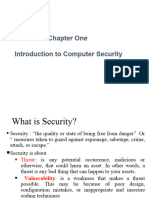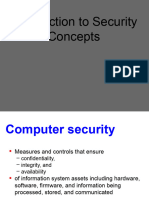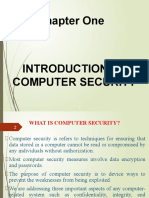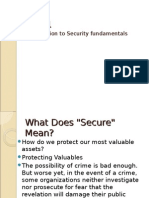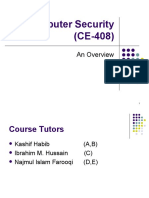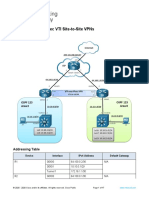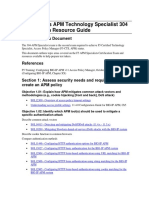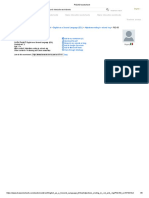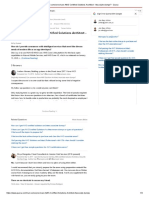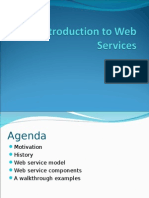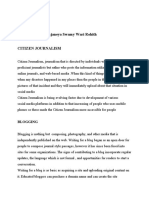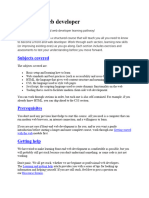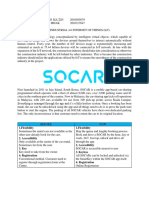0% found this document useful (0 votes)
67 views38 pagesTopic 1 - Introduction To Computer Security
This document discusses computer security and related topics such as vulnerabilities, threats, controls, attackers, and methods of defense. It covers the goals of security including confidentiality, integrity, and availability. It also addresses security issues, the basic components of security, and types of attackers and threats.
Uploaded by
rojaluteshi28Copyright
© © All Rights Reserved
We take content rights seriously. If you suspect this is your content, claim it here.
Available Formats
Download as PPT, PDF, TXT or read online on Scribd
0% found this document useful (0 votes)
67 views38 pagesTopic 1 - Introduction To Computer Security
This document discusses computer security and related topics such as vulnerabilities, threats, controls, attackers, and methods of defense. It covers the goals of security including confidentiality, integrity, and availability. It also addresses security issues, the basic components of security, and types of attackers and threats.
Uploaded by
rojaluteshi28Copyright
© © All Rights Reserved
We take content rights seriously. If you suspect this is your content, claim it here.
Available Formats
Download as PPT, PDF, TXT or read online on Scribd
/ 38




























